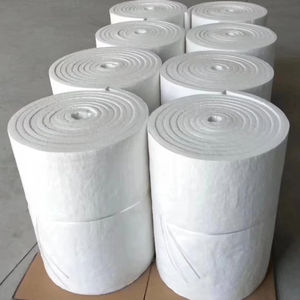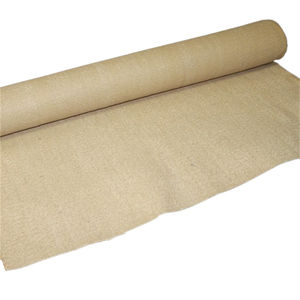Professional industry ceramic supplier, silicon nitride, silicon carbide, aluminum nitride and any other kinds of ceramics.
PRODUCT PARAMETERS
Description
Overview of Ceramic fiber blankets for 1260°C, 1400°C, and 1600°C. of various specifications for insulation fiber blankets.
Ceramic fiber blankets for 1260°C, 1400°C, and 1600°C. of various specifications for insulation fiber blankets. is a lightweight, high-temperature insulation material composed primarily of alumina-silica. It is manufactured through a melting and spinning or blowing process, resulting in a flexible, wool-like textile. This material is engineered to provide exceptional thermal management, conserving energy and protecting equipment in extreme temperature environments across various industries.
Features of Ceramic fiber blankets for 1260°C, 1400°C, and 1600°C. of various specifications for insulation fiber blankets.
-
Excellent Thermal Stability: Withstands continuous operating temperatures up to 1260°C (2300°F) and higher for certain grades, with minimal shrinkage.
-
Low Thermal Conductivity: Provides highly efficient insulation, reducing heat loss and improving energy efficiency.
-
Lightweight & Low Heat Storage: Offers low thermal mass, enabling rapid heat-up and cool-down cycles for improved process control and energy savings.
-
Thermal Shock Resistance: Highly resistant to damage from rapid temperature changes.
-
Excellent Flexibility & Resilience: Can be fabricated into blankets, boards, papers, and textiles to fit complex shapes and applications.
-
Good Chemical Stability: Resists attack from most corrosive agents, except strong alkalis and hydrofluoric acid.
Specification of Ceramic fiber blankets for 1260°C, 1400°C, and 1600°C. of various specifications for insulation fiber blankets.
Ceramic fiber blankets offer leading insulation for high heat. These blankets come in various temperature grades. The major ones are 1260 ° C, 1400 ° C, and 1600 ° C. Each quality serves details warm demands. The 1260 ° C blanket is the typical choice. It deals with constant use up to 1260 ° C well. This quality prevails and affordable. You discover it in many commercial heating systems and kilns. It additionally helps central heating boiler insulation and warmth containment. Its density options are normally 128 kg/m two or 96 kg/m three. Thickness choices are flexible. Common sizes are 25mm, 50mm, and often 100mm. Rolls are typically 7200mm long and 610mm vast. It deals with warm cycles penalty. The 1400 ° C covering steps up for hotter work. It stands up to temperature levels up to 1400 ° C constantly. This makes it suitable for even more requiring applications. Assume high-temperature furnaces or thermal processing lines. It commonly has a greater alumina material. This enhances performance. Its density is usually around 128 kg/m ³. Available thicknesses mirror the 1260 ° C grade. Roll dimensions are similar also. It offers much better warmth resistance. The 1600 ° C covering is for extreme conditions. It handles continual direct exposure up to 1600 ° C. This grade contains zirconia. Zirconia improves its optimum temperature level ability. It’s important for very high-heat zones. Applications consist of aerospace, specialized kilns, and certain heating system parts. It usually is available in a 128 kg/m two thickness. Density options may be slightly various. Rolls could be the exact same size as others. It uses the greatest thermal protection. All these coverings share vital buildings. They are lightweight. They have low thermal conductivity. This means they shield properly. They stand up to thermal shock well. They are easy to cut and install. You can compress them for limited fits. They are chemically steady in a lot of ambiences. Pick the grade based on your maximum operating temperature level. Consider the thickness for toughness requirements. Select the thickness for the called for insulation degree. These coverings are essential for power cost savings and safety and security in hot settings.
Applications of Ceramic fiber blankets for 1260°C, 1400°C, and 1600°C. of various specifications for insulation fiber blankets.
Ceramic fiber coverings handle extreme warmth. They protect commercial tools well. These coverings are available in various temperature grades. Each grade suits details applications.
The 1260 ° C grade is common. This basic covering helps several uses. It shields heating system cellular linings efficiently. It lines kilns for pottery or brick making. This grade secures warm treatment furnaces. It keeps annealing ovens warm. Utilize it for boiler insulation. It guards pipelines carrying hot gases. This blanket fits basic high-temperature needs.
The 1400 ° C grade manages a lot more extreme warmth. This mid-range blanket functions harder. It lines creating heaters for steel shaping. It protects soaking pits in steel plants. Use it around high-temperature activators. It secures parts in petrochemical crackers. This quality is tougher for requiring places.
The 1600 ° C grade fights the fiercest warmth. This premium covering deals with severe problems. It insulates inside glass melting furnaces. It lines locations near ceramic sintering kilns. Use it for important areas in aluminum melting. It protects components in high-temperature test rigs. This grade survives the hottest commercial areas.
Blankets vary in thickness. Thicker blankets obstruct more warmth loss. Thinner coverings fit tight rooms better. Thickness matters too. Denser coverings withstand physical wear. Much less thick coverings use far better insulation value per inch. Common dimensions are 7200mm x 610mm or 7200mm x 1200mm rolls. You can cut these to fit any shape needed. Select the right thickness and thickness for your work.
Company Profile
Tanki New Materials Co.Ltd. focus on the research and development, production and sales of ceramic products, serving the electronics, ceramics, chemical and other industries. Since its establishment in 2015, the company has been committed to providing customers with the best products and services, and has become a leader in the industry through continuous technological innovation and strict quality management.
Our products includes but not limited to Aerogel, Aluminum Nitride, Aluminum Oxide, Boron Carbide, Boron Nitride, Ceramic Crucible, Ceramic Fiber, Quartz Product, Refractory Material, Silicon Carbide, Silicon Nitride, ect. please feel free to contact us.

Payment Methods
T/T, Western Union, Paypal, Credit Card etc.
Shipment Methods
By air, by sea, by express, as customers request.
5 FAQs of Ceramic fiber blankets for 1260°C, 1400°C, and 1600°C. of various specifications for insulation fiber blankets.
Ceramic fiber blankets are high temperature insulation products. They are made from spun ceramic fibers. These blankets are flexible and lightweight. They offer excellent thermal resistance. People use them in many industrial applications.
What temperatures do these blankets handle? Ceramic fiber blankets come in different grades. The standard grade handles temperatures up to 1260°C (2300°F). The high purity grade works up to 1400°C (2550°F). The zirconia grade withstands even hotter conditions, up to 1600°C (2912°F). Higher temperature grades contain more alumina. This gives them better performance in intense heat.
Where are these blankets typically used? You find them lining industrial furnaces. They insulate kilns and ovens effectively. They are good for boiler insulation. People use them in power generation equipment. They are common in petrochemical plants. They provide heat containment anywhere high temperatures exist.
Are there special handling precautions? Yes, always wear proper safety gear. Use gloves and safety glasses. Wear a NIOSH-approved respirator. Dry ceramic fibers can irritate skin and lungs. Good ventilation is essential during installation. Wash exposed skin with soap and water immediately. Handle cut edges carefully to avoid fibers.
How should I install a ceramic fiber blanket? Install it with the smooth side facing the heat source. Avoid compressing the blanket too much. Compression reduces its insulating power. Use appropriate high-temperature anchors or clips. Secure the blanket firmly. Ensure no gaps exist between layers. Check manufacturer guidelines for specific details.
What specifications are available? Blankets come in various densities. Common densities are 96 kg/m³, 128 kg/m³, and 160 kg/m³. Thickness options range widely. You can get blankets from 6mm (1/4″) up to 100mm (4″) thick. Standard roll widths are 610mm (24″) or 1220mm (48″). Roll lengths are usually 5 meters (16.4 feet) or 10 meters (32.8 feet). Custom sizes are possible.
REQUEST A QUOTE
RELATED PRODUCTS
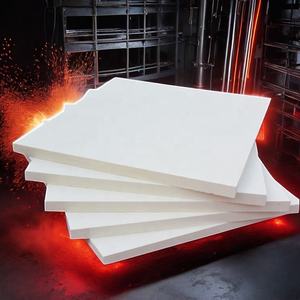
High-temperature heating Ceramic Fiber Chamber for muffle furnaces.

Excellent heat resistance, excellent insulation, ceramic fiber modules suitable for hot environments.
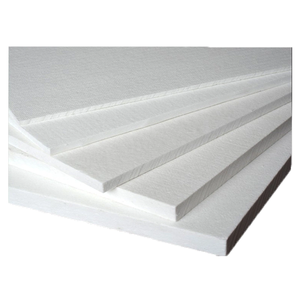
Factory-direct high-quality ceramic fiber tubing, high-temperature fire-resistant, alkali-free glass fiber yarn cable protection tubing
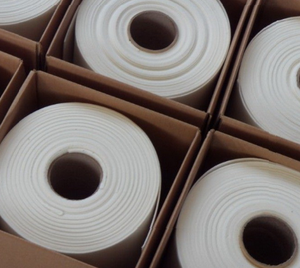
2-inch ceramic fiber board

Polycrystalline mullite fiber board 2000°C/1800°C, Ceramic Fiber board, refractory Ceramic Fiber board
